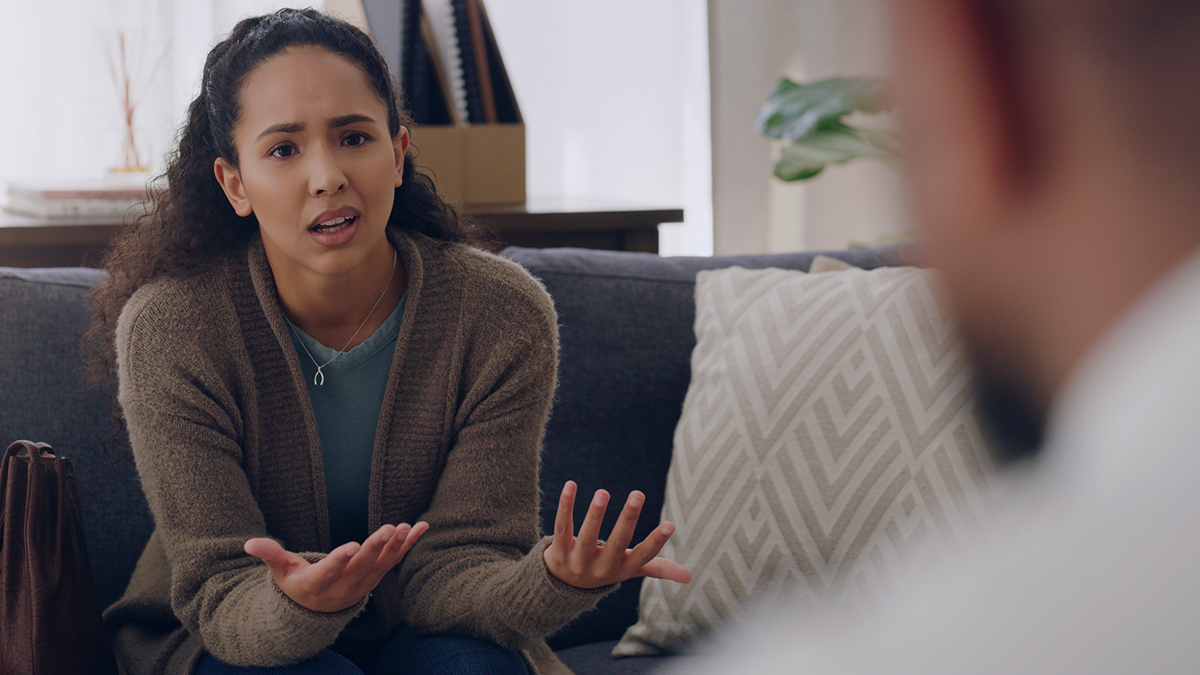A common misconception on social media about therapists is that they enable people’s harmful patterns by relying exclusively on constant validation. Underneath this criticism is the assumption that seeing a therapist is ostensibly about going to someone who will listen, nod their head, and provide an unrelenting stream of positive feedback.
In a recent trend popularized on social media, the refrain was, “The worst person you know is probably in therapy,” which seems to insinuate that their therapy is one likely to consist of a similar level of perfunctory head-nodding.
It’s certainly an interesting idea to ponder. On the one hand, wouldn’t we want the worst person we know to be in therapy? On the other hand, the vision many of us can conjure up of the worst person we know being believed and encouraged to continue their self-centered, manipulative behavior is a distressing thought.
A Relevant Trend
There’s a level of cynicism on social media about therapy that deserves some attention. A common sentiment is that therapists are engaged in a conflict of interest: by helping clients, they ultimately lose clients; thus, therapists are motivated to keep clients stuck, which retains their revenue stream.
There are likely many reasons why this cynicism exists: it could be part and parcel of a growing distrust of the medical field and science more broadly, especially in the US. It could be due to disgruntled clients who tried therapy and had negative experiences. It could be an understandable response to having witnessed a problematic family member return from therapy armed with an arsenal of weaponized therapy language, a clear conscience, and without a single modicum of change to their most damaging patterns.
And yet, underneath these frustrations, there’s a fundamental misunderstanding of therapy and the role that validation plays in the therapeutic process.
Validation is Not the Only Purpose of Therapy
Despite contrary belief, validation is not the end goal or sole purpose of therapy. The ultimate purpose of therapy is change. And on the road to change, validation is a crucial tool.
Validation exists in stark contrast to what many people come to therapy having experienced. So often, people are in denial of their experiences, or of the extent of them.
Many of us are raised with the idea that unless we are bleeding out on the concrete, then we need to buck up, smile, and count our many blessings. The problem with this attitude is that by denying or minimizing our pain, we preclude ourselves from healing from it. In the same way that being in denial of a broken leg would impede our ability to walk again, pretending that everything is okay just because we can imagine other people who have it worse keeps us stuck. Whether we are aware of it or not, this type of denial keeps us prisoners of our unrecognized traumas, unprocessed emotions, or delayed grief.
Suppressing our pain can be understood as a form of coping, since it allows us to pretend we are okay long enough to feel it in fraction. Many of us fear uncovering painful emotions because we fear being overwhelmed by them. Unfortunately, by suppressing in this way, we resign ourselves to a smaller kind of life experience, ruled by the need for consistent avoidance of difficult emotions. This can look like discomfort being present, addictive behaviors, anxiety, depression, anger, or a reliance on distraction and diversion.
Validation is a Tool
Validation is often the first step to healing. To heal from an experience, we must first recognize its impact. And validation, within the context of the therapeutic relationship, is simply the process of acknowledging a person’s hidden pain. Of sitting across from that person and allowing their humanity to fill the room without apology, without being minimized, brushed off, or swept somewhere unseen.
It’s important to notice that this validating experience exists apart from the objective truth of what ails a person and why. Identifying that part comes later. With validation, the therapist merely encourages a person to exist fully by gently eliciting those wounded parts that deserve care. In doing so, the therapist invites authenticity and, by receiving this authenticity without judgment, facilitates safety and trust, even as difficult emotions and experiences are brought to the surface. This essential step in the healing process allows the difficult work in therapy to continue without all the shame and avoidance.
Okay, So What Is the Point of Therapy?
Having validated one’s emotional turmoil, the attention can now shift to how one might actively participate in the process of addressing this pain. This is the “change” part, which is the goal of therapy. Therapists call this “treatment” or “work,” but make no mistake, it’s a part of therapy everywhere. And part of this work often helps us—gently and at a comfortable, controlled pace—to recognize the role we play in our suffering, and identify what we can change to exist more in alignment with our goals.
To ignore this part of therapy would be to keep us trapped, beholden to patterns that may be inhibiting our growth or be self-defeating. When there is always someone or something else to blame, there is no room for accountability or exerting agency over our lives, which is the definition of hopelessness. Validation, in this parodied sense of validating every thought and emotion, would deny us the opportunity to discover what might lie beyond our awareness, but is nonetheless within our control. That experience wouldn’t empower; it would diminish.
The point of therapy is to help us identify what is within our power. Through expanding our awareness and being provided with the right kind of support, we learn to reclaim our story and live authentically. Therapy isn’t designed to keep us stuck or viewing the world through the same lens. It helps us adapt and find greater harmony in our relationships. Therapy isn’t always easy. It often involves working on ways to communicate and act in healthier, more adaptive ways. Sometimes, it even challenges us to acknowledge our more harmful patterns when they lead to disconnection or isolation.
Closing Thoughts
Validation gives us the courage to face the things that have been done to us and what we can do to improve our circumstances. It encourages both acceptance and change. It allows for healing rather than enabling. It’s a necessary and critical part of the therapeutic process, but it’s not the purpose of therapy.
So, if you find yourself lamenting how the worst person you know is probably in therapy, count your lucky stars. That shows they realize at least in part that what they’re doing isn’t working. And they just might be hearing what they need to hear.
This blog contains the views of Alex Thomson and is intended as educational content. It is not a replacement for therapy or formalized diagnostic assessment. Read full Disclaimer.
Alex Thomson is a licensed associate professional counselor in the state of Georgia and a certified trauma professional. He provides counseling services through Exhale Counseling Services in Acworth. He is supervised by Jennifer Wells, LPC, CPCS [LPC: 008961, CPCS: 4183].


